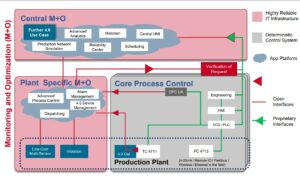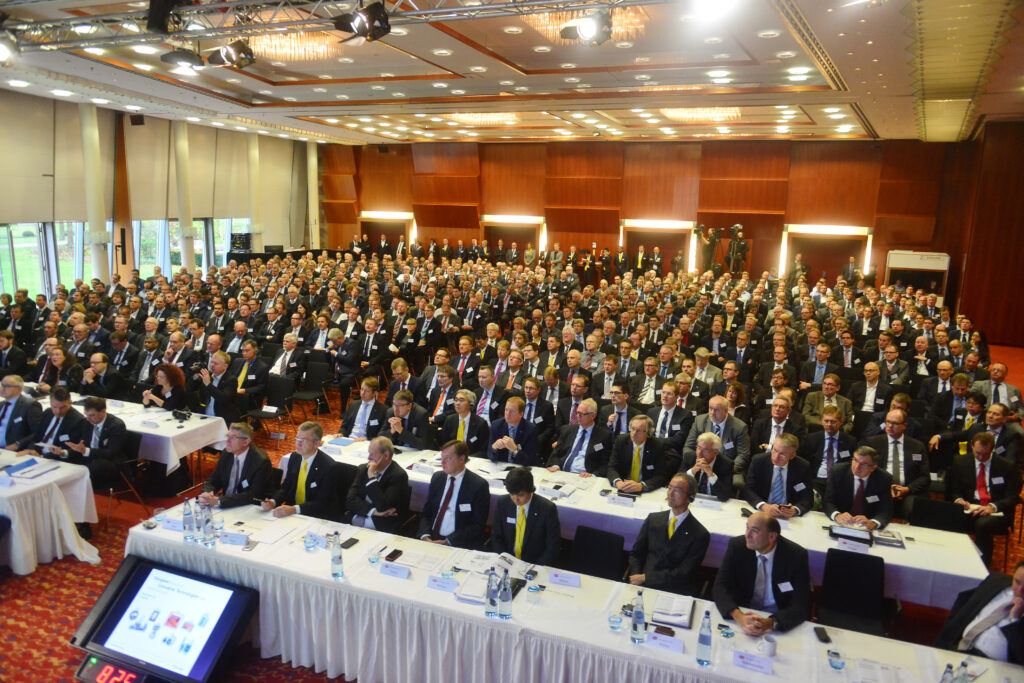This is not the first post on this blog dealing with change in the process industry and its automation. The changes not only affect individual technologies but also their interaction with each other. At the same time, they open up new opportunities to improve, modify or completely redesign existing business models. A disruptive transformation takes place quickly and unnoticed. The industry is, therefore, discussing more open architectures for the process industry such as NAMUR open architecture.
The process industry, which has always been known as conservative and also rather slow, is increasingly concerned with trends, new technologies, and business models. And yet it seems that a lot is discussed but nothing is actually implemented.
The process automation community is quite proud of the clear structures that guarantee high availability and functional safety. This refers to the automation pyramid, which, despite all its advantages, is also the brake pad for the digital transformation of the process industry. Everything within the pyramid is structured. However, networking according to the Cyber-Physical System is not possible and therefore communication across value-added networks is not possible. In order to implement Industry 4.0 in the process industry, we definitely need open and flexible, modular structures. But without sacrificing security.
Connect pyramid and cloud with each other based on NAMUR open architecture
As early as 2016, NAMUR surprised the community with an open architecture that combines the availability and security of the automation pyramid with the benefits of digital transformation. In short: the NAMUR open architecture, abbreviated NOA. Like the biblical acronym, NOA is intended to bring the process industry safely into digital transformation. To this end, the future automation landscape will be divided into three areas in order to establish an open communication channel.
Source: www.namur.net
Namur open architecture can be divided into three areas
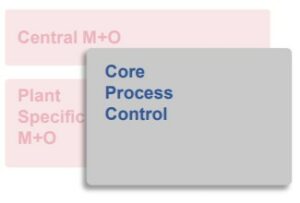
The first area represents the aforementioned automation pyramid, which continues to stand for process automation for availability, safety, and real-time communication.
But with all the technologies available to us today, we can learn much more about the equipment, assets, and processes than just the process values for automating and controlling production. But the implemented automation infrastructure is too scarce to transmit and execute all advanced data and services.
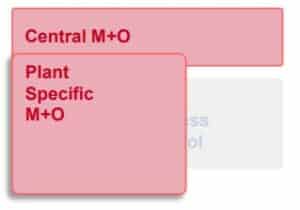
An expansion of this infrastructure in the required order of magnitude is not economically feasible within the automation pyramid. Therefore, the favorable IT landscape has the charm to create additional benefits for data quickly and cost-effectively. NAMUR open architecture has therefore defined the Monitor and Optimization area, which, depending on the application, can be mapped in the Cloud both close to the plant and across all sites.
Many questions
It, therefore, makes sense to use the advantages such as scaling or life cycle of a cloud-based solution in the monitor and optimization area. But does the new information also have to be played back into the automation pyramid?
Which application or service in process automation will be better because it receives additional information from the big data analyses?
Aren’t we taking too many risks when we connect the cloud to the pyramid and open the door to abuse?
Risk and Benefit
In general, the willingness to take risks always depends on the benefit. The higher the benefit, the greater the willingness to take calculable risks. We are experiencing this today, for example, with the current social media platforms such as Whats App. Although everyone knows that Whats App is the data octopus of our time, we all willingly agree to evaluate everything about us. And why? Because the benefits it offers are so great in everyday life.
I don’t want to equate the optimization of a process plant with “Whats App” services, but I think the use case describes the phenomenon quite well. In other words, where is the killer application that convinces the community to transfer data from the cloud to the heart of process automation?
NOA demonstrators show that it works
We have now presented three application cases for NOA where data is sent out of the automation pyramid, processed in the cloud and then transferred back into the control system as information at the NAMUR HS 2017 and 2018 also at the Achema 2018.
- NAMUR HS 2017: Valve Monitor
Valve diagnosis in the cloud (global M+O area) including app, which then sends operating and maintenance instructions via control valves to the operating level of the process control system for the plant crew. - Achema 2018: Flow Monitor
Diagnosis in the local M+O area, based on data from a Coriolis measuring device, which then sends operating and maintenance instructions via the complex flow measurement to the operating level of the process control system for the plant crew. - NAMUR HS 2018: PAT Monitor
Continuous evaluation in a cloud-based app of ph sensor data, which has an automatic cleaning device. This allows continuous statements about the condition of the sensor to be obtained. This eliminates the need for sequential maintenance intervals.
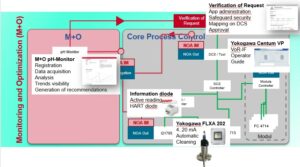
Verification of Request
All three demonstrators show how easy it is to implement this additional benefit. In all three cases, the data is transferred from the pyramid via an information diode and processed in the M+O area. The results are displayed on an app and additionally reported as operator guide on the operator station of the control system. A guard technologically controls the secure transmission to the control system – Verification of Request. This guard, or let’s call him VoR, ensures that only registered apps in the specified value range and encrypted information is transmitted to the control system.
However, despite the benefits presented and the minimized risk, there is still no commercial implementation of such a complete NOA application, including feedback via the VoR guard into the control system. The proposed VoR guard uses technical standards to implement confidentiality, integrity, availability, authenticity and data protection in current technologies. The integration and linking of cloud services with applications in the automation pyramid as well as the process control system are still controversial.
Do we dare the dashboard?
But the ability to display additional information in a dashboard quickly adds value and can be implemented outside the pyramid. But even there we can’t neglect the above-mentioned standards for confidentiality, integrity and so on. We want to trust the displayed values and be able to use them.
But when will there be the first commercial implementations in which plant operators can access information from the cloud?
What needs to be done to implement them in the facilities?
What do you think about the benefits and costs of NAMUR open architecture?
NAMUR-Keynote: MD Germany Helget discloses that having the right technology is not enough


